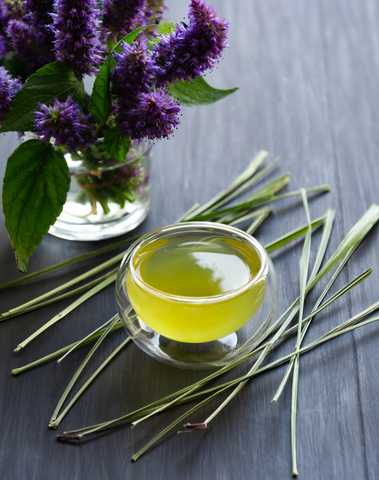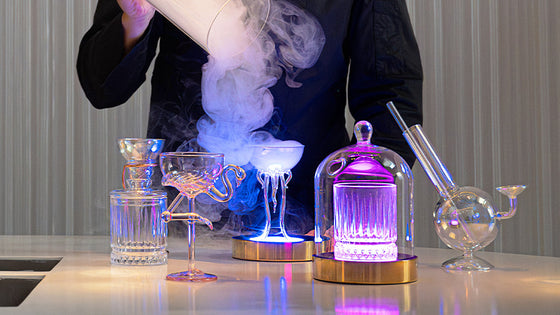Pairing Lemongrass Aromas with Cocktail Ingredients
As nights draw, but the days are still warm, the midges are out in full force. What do you whip out of an evening? Your citronella candle, of course. The citronella smell is so evocative of this time of year that we’ve decided to dedicate a whole article to the source: lemongrass. Citronella is the essential oil from the East Indian variant of lemongrass, also called Cochin grass or Malabar grass, growing on mainland Southern Asia. However, it’s the West Indian variant we use for culinary purposes. This lemongrass grows in maritime Southeast Asia and is used in hundreds of ways in even more dishes.

Lemongrass as an Ingredient
The best thing about lemongrass is that distinctive and evocative lemony, grassy, floral fragrance. And the reason it gets used so often is that the bamboo-like structure of the grass holds its shape when stewed, meaning the flavours are released slowly in the cooking process without the dank, green bitterness you get from stewing leafy herbs like basil or mint. Therefore its dishes that need this prolonged cooking process that lemongrass is most famous for; curries, teas, soups and stocks. However, because of its nature, it also works in liquid-based macerations and infusions as a flavouring agent used in sauces, syrups, oils, salad dressings or desserts.
The mixture of light lemon scent, without the harsh citric acid, hit of lemon juice mixed with grassy and floral aromas means that lemongrass pairs well with both savoury and sweet, and both fatty and lean foods: as at home with heavy cream as it is in fragrant, herbal teas.
Lemongrass in Cocktails
When the cocktail renaissance happened in the late 1990s, led by Dale de Groff in America and Dick Bradsell, Jonathan Downy and Douglas Ankara in the UK, bartenders became dead set on using fresh produce. At the same time, supermarkets had begun hosting ingredients that television chefs were making popular through their easy-to-make recipes. Bars like the Met Bar, Alphabet, Home and Match opened in 1997, LAB in 1999, and lemongrass became common on martini menus. The late Douglas Ankara’s book, Cocktails: Shaken and Stirred, published in 2007, featured a Lemongrass and Wild Chilli Martini. The Rhubarb and Lemongrass Martini was served at Zuma in London circa 2003. The Lemongrass Cosmo was discovered in Hong Kong in 2005, which inspired the Ginger and Lemongrass Martini invented by Simon Difford in 2005. The Light Bar at the St Martins Lane hotel opened in 1999, and the Lemongrass Collins was a best seller there for almost a decade.
How to Use Lemongrass?
You can buy lemongrass fresh or dried, the latter having more of the lemon fragrance but less of the fresher grassy and floral tones. If you buy fresh, you can slice it, mash it, bruise it or mince it to get different degrees of flavour from a single spike but take care, as the leaves are incredibly fibrous and should be strained out of the drink before service. The leaves can also be very sharp, and cause paper or splinter-like cuts, so handle with caution! If you don’t want to use dried or fresh during service, you can always make a tisane (a tea-like infusion using hot water) or either macerate or infuse any alcoholic spirits that pair well. White spirits are a natural fit with their peppery, grassy, floral and citrus notes. Then, of course, there is the lemongrass flavour you can use with your Flavour Blaster gun.
Pairing Lemongrass Aromas
If you’d like to try pairing your lemongrass aroma with drinks, either in an edible bubble or under a cloche, we’ve done a little digging to see what naturally pairs well with this versatile herb.
- Anything salty, or briny, like olive brine or pickle juice
- Anything with natural aniseed flavours like dill, kümmel or even a drop of absinthe
- Green, sweet, watery vegetables like peas, bell peppers and cucumbers
- Anything with a hint of spice, like chilli, ginger, purple basil or clove.
- Anything roasted, like chocolate, coffee or peanut — lemongrass, pairs well with satay marinade, for example.
- The lighter berries, like strawberry, raspberry and blueberries, which all pick-up lemon nicely
- Rich and creamy flavours like white chocolate, coconut derivatives or vanilla
- Anything with a floral tone, like the violet-scented oris root, a botanical used in gin, and rose and orange flower waters
- Tropical meaty fruits like lychee, star fruit and guava.
- Late summer or autumnal British fruits like rhubarb, quince and pear.
- And finally, sweet flavours blended with acidic juices, like honey or agave mixed with lemon or pineapple.
Also Read: The Art of the Edible Cocktail Bubble
















